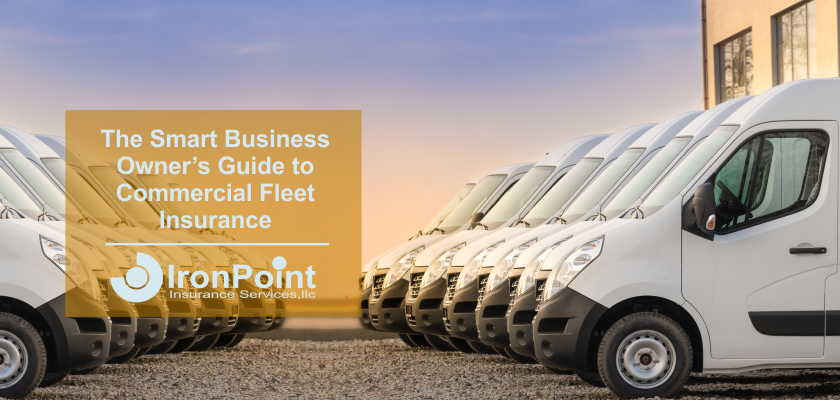The Smart Business Owner’s Guide to Commercial Fleet Insurance

You wouldn’t send your team into the field without the right gear—so why would you send your business vehicles on the road without solid protection? Commercial fleet insurance isn’t just another business expense; it’s a strategy, a safeguard, and quite possibly the smartest investment you’ll make this year.
Imagine this: One of your drivers gets into an accident. Without the right coverage, you’re suddenly dealing with repairs, liability claims, and downtime that costs you money every single day. But with a comprehensive fleet policy, you’re not just covered—you’re back on the road, with less drama, and fewer delays.
Let’s break it all down so you can keep your business moving full speed ahead.
What Exactly is Commercial Fleet Insurance?
Think of commercial fleet insurance as the VIP pass for businesses that own multiple vehicles. Different than your standard commercial auto insurance policy, where you can insure a few trucks or vans, and the company car, a fleet policy is a streamlined plan that covers all your vehicles—saving you time, hassle, and, yes, money.
Who needs it? If your business owns and operates three or more vehicles, this is for you. Whether you’re running a construction company, delivery service, or a team of field reps, commercial fleet insurance keeps your operations covered and your stress levels low.
Free Fleet Safety & Management Templates
Managing a fleet doesn’t have to be complicated. Get instant access to templates to help create a good driver safety program and reduce your risk.
What Does Commercial Fleet Insurance Actually Cover?
Let’s cut through the clutter. You don’t need vague promises or insurance jargon—you need real protection that keeps your fleet on the road and your business thriving. Here’s what truly matters when it comes to commercial fleet insurance.
1. Liability Coverage
Accidents happen. And when they do, liability coverage handles bodily injury and property damage so you don’t have to dig into company funds to cover it.
2. Collision & Comprehensive Coverage
From fender benders to major accidents, collision coverage ensures your vehicles get repaired (or replaced). And for those unpredictable moments—hailstorms, theft, or even an unfortunate deer encounter—comprehensive coverage has your back.
3. Uninsured/Underinsured Motorist Protection
Not everyone on the road is as responsible as you. If one of your fleet vehicles gets hit by an uninsured or underinsured driver, this coverage makes sure your business isn’t left picking up the tab.
4. Medical Payments & Personal Injury Protection (PIP)
Covers medical expenses for your drivers and their passengers—because accidents don’t just damage vehicles.
5. Additional Coverage Options
Depending on your business, you might need:
- Hired & Non-Owned Auto Insurance (for rental or employee-owned vehicles used for work)
- Cargo Coverage (if your business transports goods)
- Roadside Assistance (so breakdowns don’t mean business standstills)
Commercial Fleet Insurance vs. Other Business Auto Policies
Let’s be honest—navigating business vehicle insurance can feel like trying to assemble furniture without instructions. There’s jargon, fine print, and a whole lot of options that may or may not be what your business actually needs. But here’s the thing: not all business vehicle insurance is created equal. And if you’re managing a fleet, knowing the difference can mean the difference between airtight coverage and a costly mistake.
- Business Auto Insurance: Perfect for small businesses with just one or two company vehicles.
- Commercial Fleet Insurance: Built for companies managing multiple vehicles that need a scalable solution.
- Truck Fleet Insurance: Specifically for businesses running medium to heavy-duty trucks.
- Business Fleet Car Insurance & Van Insurance: Tailored for businesses using sedans, service vans, or light-duty commercial vehicles.
If your fleet is growing, fleet insurance isn’t just a smart move—it’s a necessary one.
What Affects the Cost of Commercial Fleet Insurance?
Fleet insurance pricing is a bit like predicting the weather—some factors are within your control, while others—not so much. From the type of vehicles you operate to the driving habits of your employees, several moving parts determine how much you’ll pay to keep your fleet protected. Here’s what shapes the cost and how you can make sure you’re not overpaying.
1. Fleet Size & Vehicle Type
More vehicles? Bigger premiums. Heavy-duty trucks? Expect higher rates than a fleet of compact service vans.
2. Driver Records
Your drivers’ habits directly impact your insurance costs. A clean driving record keeps premiums low, while a history of accidents or speeding tickets? Not so much.
3. Where You Operate
City driving means more traffic, more risk, and higher rates. Rural routes might seem safer, but wildlife collisions are real (trust us on this one).
4. Annual Mileage & Usage
Vehicles that clock in high mileage for long-haul deliveries will have higher premiums than those used for local service calls.
5. Claims History
A spotless record means lower rates, while frequent claims signal higher risk and, you guessed it, higher premiums.
Free Fleet Safety & Management Templates
Managing a fleet doesn’t have to be complicated. Get instant access to templates to help create a good driver safety program and reduce your risk.
How to Lower Your Commercial Fleet Insurance Costs
Let’s talk savings—because nobody likes overpaying for insurance. If you’re running a fleet, every dollar counts and the right strategies can help you slash premiums without sacrificing coverage. So, how do the savviest business owners keep their fleet insurance costs in check? Here’s how the pros do it:
1. Train Your Drivers
A well-trained driver is a safe driver. Regular defensive driving courses and safety training programs can significantly reduce accidents (and insurance costs).
2. Use Telematics & GPS Tracking
Tech isn’t just for logistics—it can track driving habits, prevent reckless behavior, and optimize routes, all of which help lower your premiums.
3. Keep Up with Maintenance
Regular inspections and maintenance don’t just keep vehicles running—they keep your insurance provider happy and your rates low.
4. Choose a Higher Deductible
Raising your deductible can lower your monthly premiums—just make sure your business can handle the out-of-pocket cost if needed.
5. Compare & Bundle Policies
Working with an independent insurance agency means you can shop for the best rates and bundle policies for extra savings.
Time to Lock in the Right Coverage
Your business runs on wheels—make sure they’re covered. Whether you’re managing three vehicles or thirty, the right commercial fleet insurance keeps you moving without the financial headaches.
Get a Quote Today
Looking for affordable commercial fleet insurance tailored to your needs? IronPoint Insurance Services, LLC is here to help. Get a quote today and protect your fleet before the unexpected happens.
Let’s Get Started
Select the way you want to start your quote.
Let’s Get In Touch
Compare Quote Online

Compare Business Quotes
Looking for business insurance? Click “Start a Quote” to compare Business Owner’s Policy and Worker’s Compensation rates. Ready to purchase? Choose “Quote & Buy Online” to buy directly online.
Rather speak with an insurance agent?
1-877-334-7646






